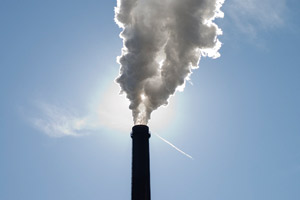With most of Washington’s attention focused on health care reform, it’s easy to forget that Democrats are also working on a cap-and-trade bill to combat climate change. On September 30, Sens. Barbara Boxer (D-Calif.) and John Kerry (D-Mass.) introduced their version of the cap-and-trade bill that passed the House back in June. But the Kerry-Boxer bill has a big piece missing: it says almost nothing about how pollution permits will be allocated. Grist explains why: “Doling out what is effectively a huge new pot of money is a subject of considerable interest to many senators, and it’s expected to help bring some recalcitrant Democrats on board.”
The Senate Energy and Natural Resources Committee discussed exactly this topic at a hearing on Wednesday. Kate Sheppard will have more on this later in the week, but here were a couple of the less constructive suggestions:
“What a mess! Taking money from people in order to cure the planet that has no impact on people’s standard of living,” exclaimed Republican senator Robert Bennett of Utah. (He may have overlooked the economic dangers posed by Katrina-like disasters, rising sea levels, higher ocean temperatures and acid levels—not to mention increased temperatures and water scarcity in Utah, Bennett’s home state.)
Bennett instead promoted the merits of a carbon charge instead of a cap-and-trade system. But as panelist Dr. Denny Ellerman from the Center for Energy and Environmental Policy Research pointed out, a carbon tax would present “exactly the same problem of what to do with revenue.”
Sen. Jim Bunning (R-Ky.) had what you might call a more complicated take. First, he voiced his skepticism of climate change. “In the early ’80s we were going to have an ice age. The science is not perfect,” he said, referring to the widely debunked theory of global cooling. Then, abruptly he shifted to his concerns that China and India are never going to take responsibility for their carbon emissions. “I worry about that because I have 40 grandkids.”
For the sake of Bunning’s progeny, then, let’s hope the Senate makes some headway.














